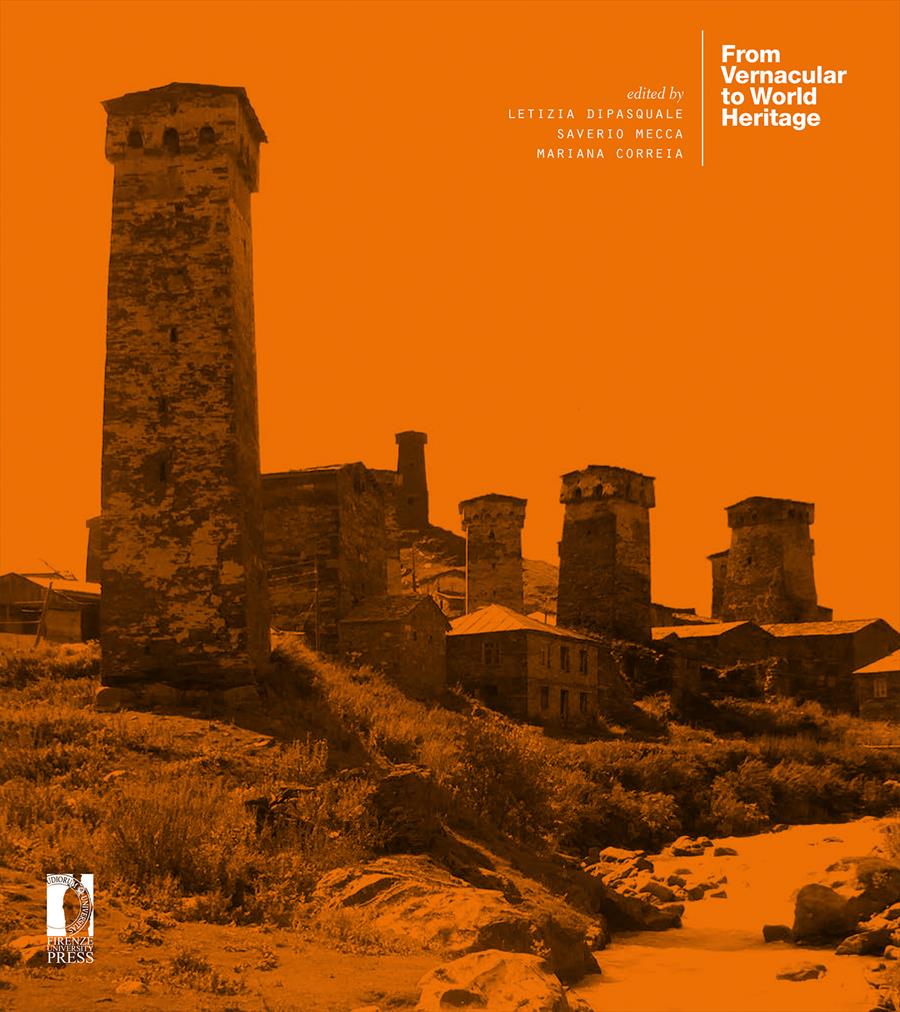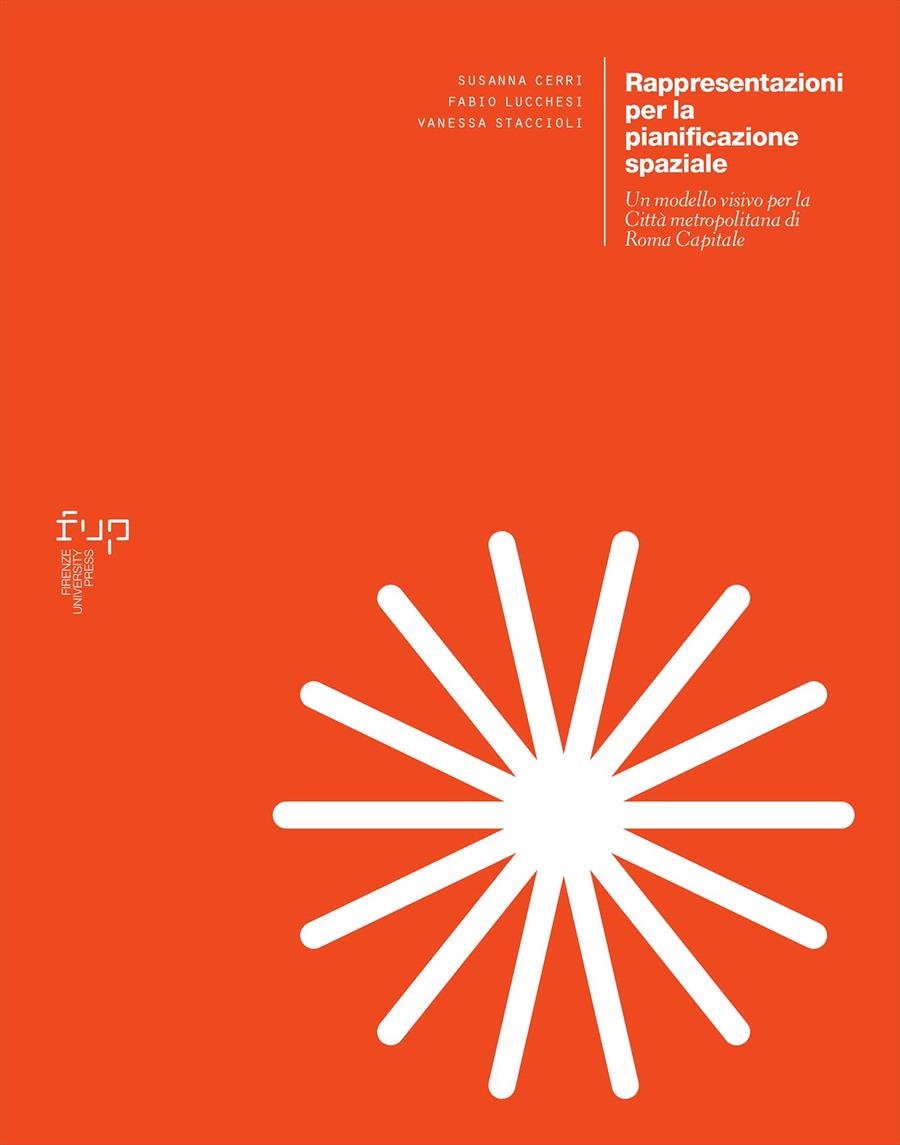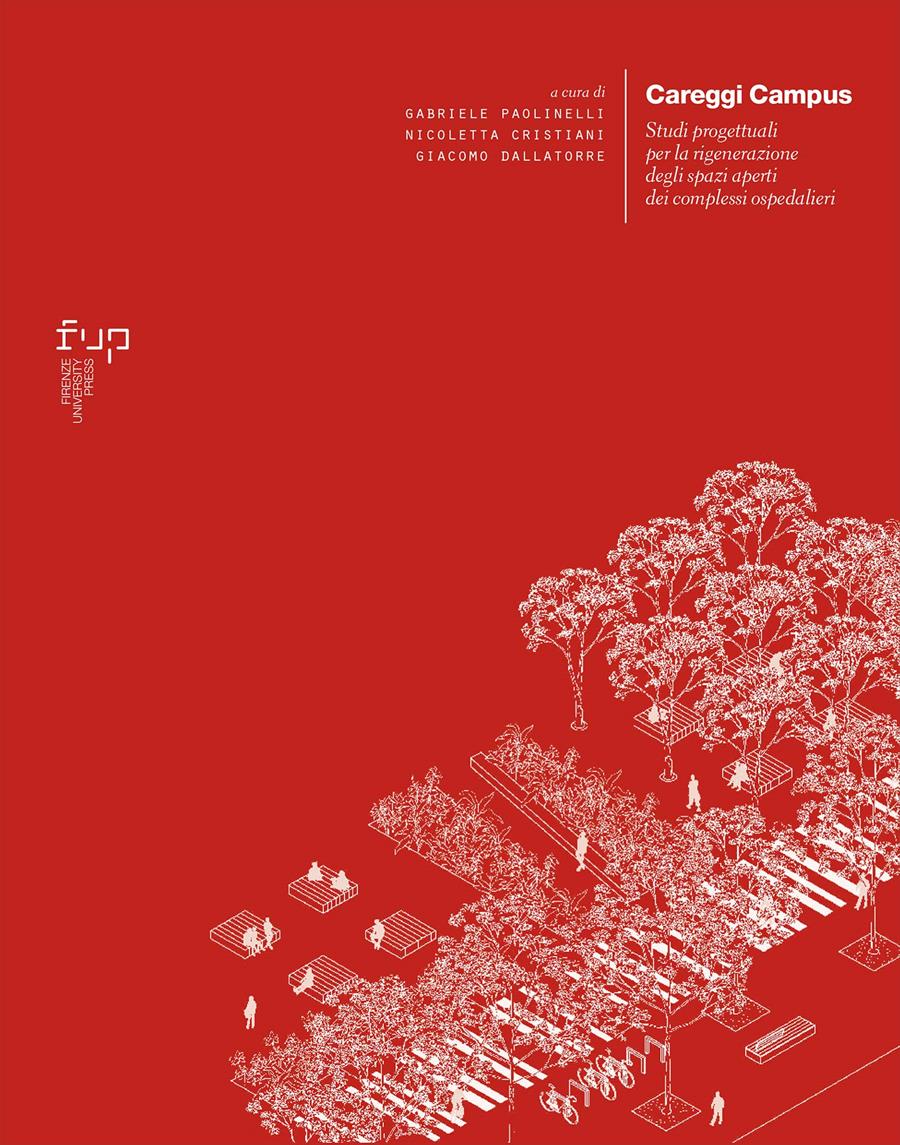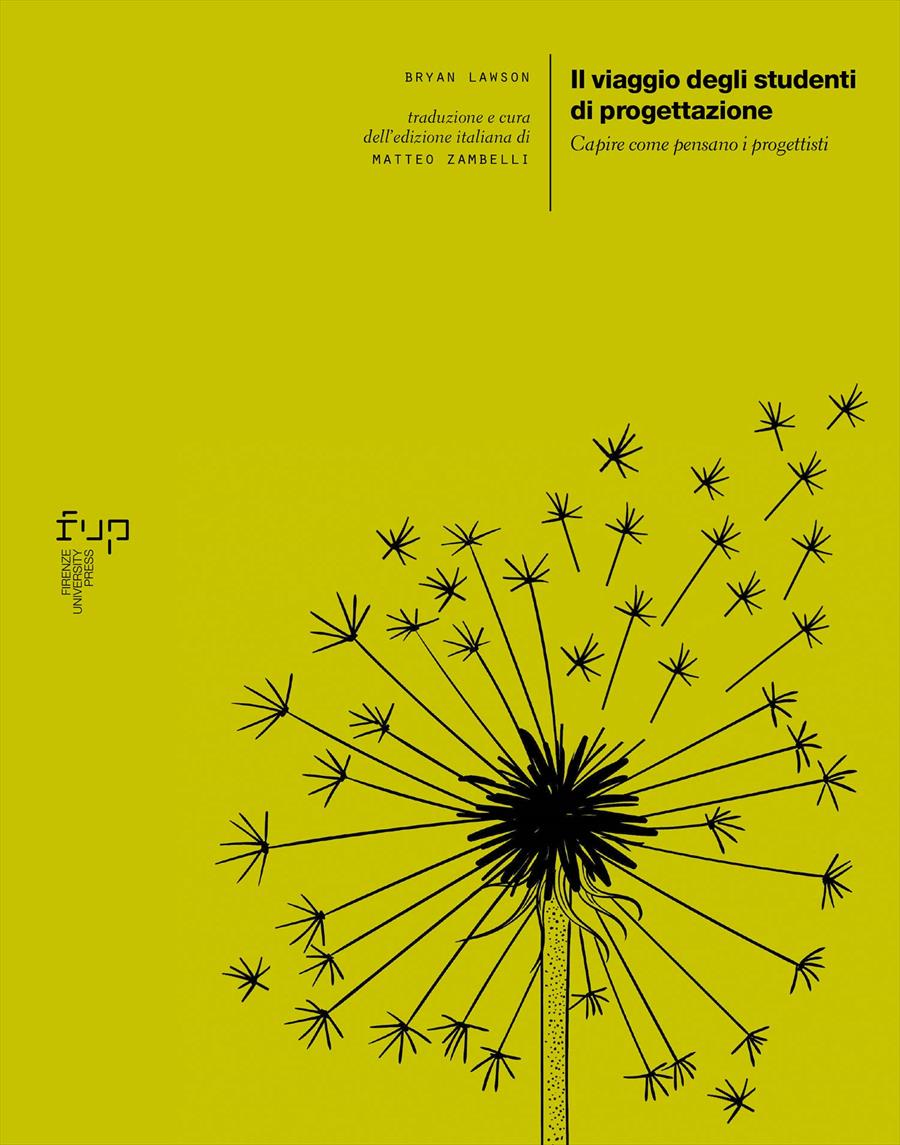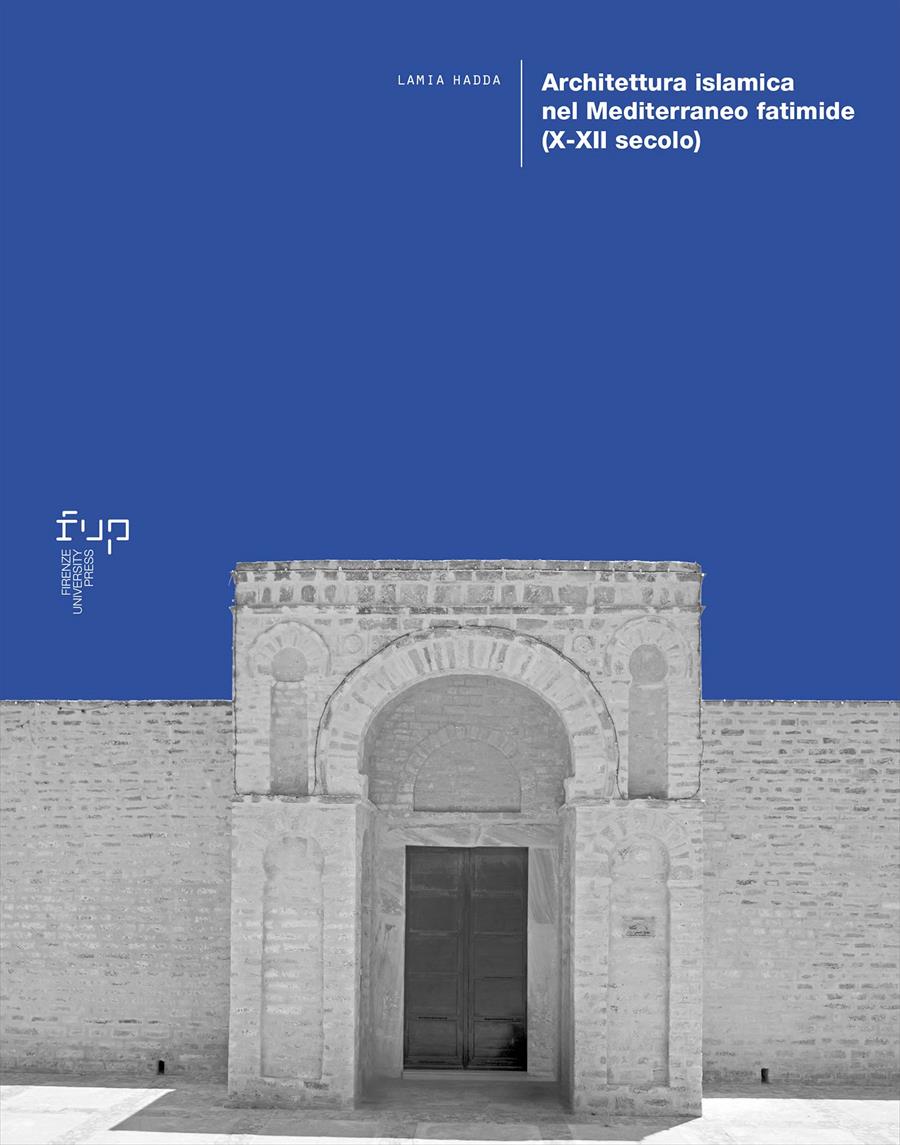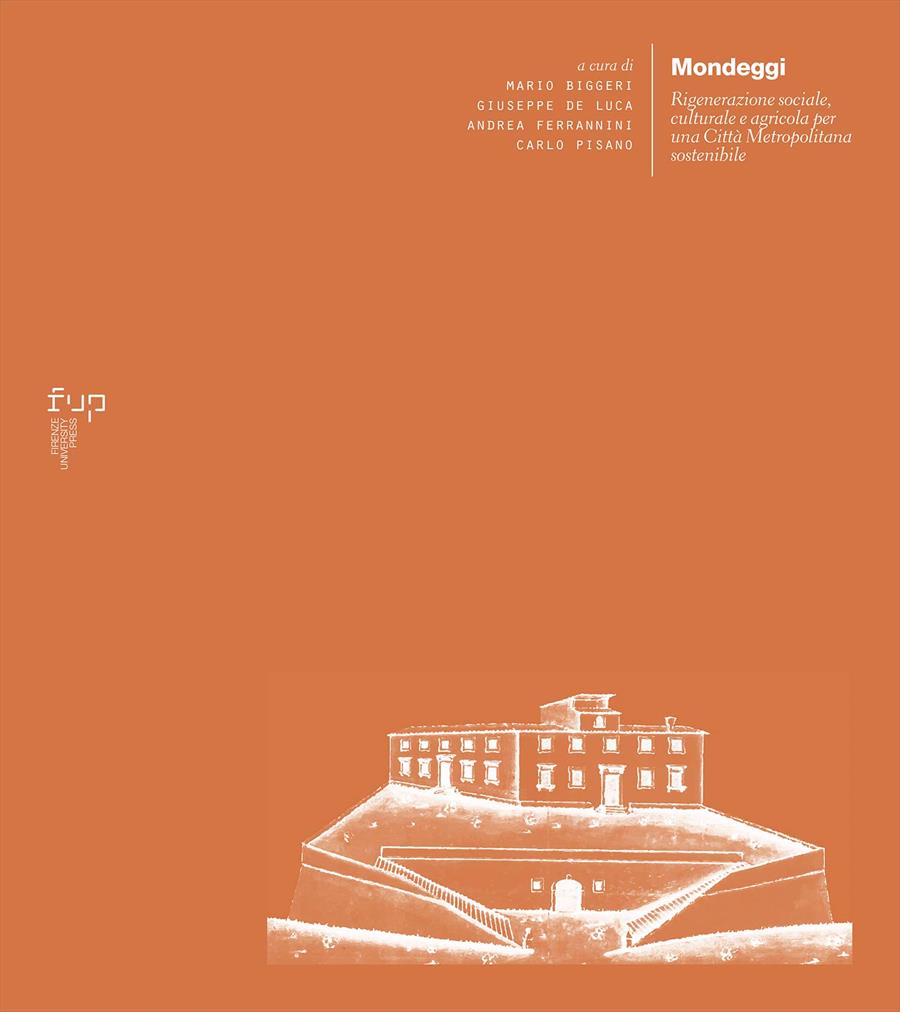From Vernacular to World Heritage
- Edited by:
- Letizia Dipasquale,
- Saverio Mecca,
- Mariana Correia,
This publication brings together the results of the project 3DPAST: Living and virtual visiting European World Heritage, co-funded by the Creative Europe EU programme. The research highlighted the exceptional character and quality of living in vernacular dwellings found in World Heritage sites. This was possible by seizing the cultural space of European vernacular heritage, located in Pico island (Portugal), Cuenca town (Spain), Pienza (Italy), Old Rauma (Finland), Transylvania (Romania), Berat & Gjirokastra (Albania), Pátmos (Greece), and Upper Svaneti (Georgia).
New digital realities grant the possibility to visit and to appreciate those places, to non-travelling audiences, who lack the opportunity to experience this unique heritage in situ. Creative potential is highlighted in 3D models and digital visualisations, which associate outstanding local knowledge with the vernacular expression of World Heritage.
- Keywords:
- Vernacular Architecture,
- World Heritage Management,
- Virtual Heritage,
- Intangible Heritage,
- Cultural Landscape,
- DOI: 10.36253/978-88-5518-293-5
- Series: Ricerche. Architettura, Pianificazione, Paesaggio, Design
- Scientific Board
- Language: English
- Subjects: Architecture
University of Florence, Italy - ORCID: 0000-0003-0747-421X
University of Florence, Italy - ORCID: 0000-0001-9568-7789
ESG, School Gallaecia, Portugal - ORCID: 0000-0003-3053-1382
Saverio Mecca Architect and full professor at the University of Florence, has been Director of the Department of Architecture of the Università di Firenze, 2013-2020. He works in the academic research field of construction management and of architectural heritage in the Mediterranean region.
Mariana Correia President and Professor at Escola Superior Gallaecia, Portugal. ICOMOS World Heritage expert with missions in Africa, Europe, Middle East & Asia. Course instructor for UNESCO, ICOMOS, ICCROM, IUCN & AWHF. Grant research reviewer for several Science National Agencies. Project Leader of 3DPAST, VerSus & Seismic-V Research Projects.
- AAP-CDN 1988, Arquitectura Popular em Portugal, Associação dos Arquitectos Portugueses, Conselho Directivo Nacional, Lisboa.
- Achenza M., Cannas L.G.F., Picone A. 2014, Natural air conditioning design in Correia M., Dipasquale L., Mecca S. (eds) 2014, pp. 200-206.
- Açores G. R. 1977, Açores: Breves informações sobre a vitivinicultura (Pico e Graciosa); a cultura do ananás; o tabaco e a sua industrialização; o chá, Governo Regional dos Açores, Ponta Delgada.
- Addis B. 2015, Building: 3000 Years of Design, Engineering, and Construction, Phaidon Press, London.
- Agudo J. 2006, Arquitectura tradicional. Indefiniciones y reconocimiento en las formulaciones internacionales sobre patrimonio, in J. L. Martín (ed.) La arquitectura vernácula Patrimonio de la Humanidad, Badajoz, Diputación de Badajoz, vol. 1, pp.19-52.
- Akeroy J. 2006, The Historic Countryside of the Saxon Villages of Southern Transylvania, Fundatia Adept Ed., Mures.
- Alau Massa J., González Sterlin L., Ibáñez Montoya J. 1983, Cuenca Edificada, Colegio Oficial de Arquitectos de Madrid, Madrid
- Alcindor M., Lima A., Alcindor-Huelva P. 2020, Ethos through traditional construction processes: Historical development between community builder in the Minho Area of the North-western Iberian Peninsula and Pico Island in the Azores, in Learning, Culture and Social Interaction, 28, p.100468. DOI: 10.1016/j.lcsi.2020.100468
- Alexander Ch. 1977, A Pattern Language, Oxford University Press, Oxford & New York.
- Alinovi F. 2011, Game start! Strumenti per comprendere i videogiochi, Springer-Verlag, Milan.
- Alonso Velasco J. 2002, Plan Especial de la Ciudad Alta de Cuenca y sus Hoces, A.V. Arquitectura y Urbanismo S.A., Madrid.
- Amorim M. A. 2016, O Pico. A abordagem de uma ilha. Vol. I – As Famílias. Tomo IX – As famílias de Santa Luzia nos finais do século XIX. Desafios da Montanha, CITCEM, Porto.
- Anolli L., Mantovani F. 2011, Come funziona la nostra mente. Apprendimento, simulazione e serious games, Il Mulino, Bologna.
- Arikan F.D. 2015, Tracking continuities between the Modern and Vernacular Architecture: Courtyard in the West Mediterranean Architetture as a case study, unpublished master’s thesis of Architecture, Middle East Technical University.
- Asquith L., Vellinga M. (eds.) 2006, Vernacular Architecture in the Twenty-First Century: Theory, education and practice, Taylor & Francis, London. DOI: 10.4324/9780203003862
- Australian National University 2009, Implication of Climate Changes for Australian World Heritage Properties. A report to the Department of Climate Change and the Department of the Environment, Water, Heritage and the Arts, Fenner School of Environment and Society, the Australian National University.
- Avella F. 2018, Ricostruzione congetturale da disegni di archivio: aspetti metodologici, in Salerno R. (ed.), Rappresentazione materiale e immateriale, Gangemi Editore, Rome, pp. 301-310.
- BPIE 2016, Driving Transformational change in the construction value chain, Buildings Performance Institute Europe. Available at: <http://i2-4c.eu/wpcontent/uploads/2016/03/DrivingTransformationalChangeCVC2016.pdf> (09/2020)
- Briganti A. 2016, Albania: Where Restoration Merges with Cultural Tourism and Sustainable Socio-Economic Development. A case study, in Book of proceedings of the 5th International conference on Heritage and Sustainable Development, Green Lines Institute, Lisbon.
- Brusaporci S., Trizio I. 2013, La “Carta di Londra” e il patrimonio architettonico: riflessioni circa una possibile implementazione, «SCIRES», vol. 3, issue 2, pp. 55-68. DOI: 10.2423/i22394303v3n2p55
- Carlevaris L. 2011, Luce, superficie, visione: il modello come metafora, in Albisinni P., De Carlo L. (eds.), Architettura | di- segno | modello. Verso un archivio digitale dell’opera di maestri del XX secolo, Gangemi Editore, Rome, pp. 97-108.
- Caruso M. 2019, La arquitectura de un conjunto Patrimonio de la UNESCO: el caso de Old Rauma (Finlandia). De la escala urbana a laws estrategias de conservación, unpublished master’s degree thesis, Department of Architectural Composition, Politechnical University of Valencia. Available at <http://hdl.handle.net/10251/135909> (02/19)
- Caruso M. 2020, La arquitectura de un conjunto Patrimonio de la UNESCO: el caso de Old Rauma (Finlandia). De la escala urbana a las estrategias de conservación, unpublished Master’s degree thesis, Universitat Politècnica de València, <http://hdl.handle.Net/10251/135909> (01/20).
- Cataldi G. 1978, Pienza e la sua Piazza. Nuove ipotesi tipologiche di lettura, «Studi e Documenti di Architettura», no. 7, Alinea, Florence.
- Cataldi G., Cocchieri C., Di Cristina L., Formichi F., Fusco G., Marcucci L. 1985, Rilievi di Pienza, Alinea, Florence.
- Cataldi G., Formichi F. 2004, Pienza Forma Urbis, «Quaderni di Aiòn», no. 6.
- Cataldi G., Formichi F., Merlo A., Visentin L. 2003, Pienza, a planned vicus transformed in a town. Before Pienza, Corsignano, in Petruccioli A., Stella M., Strappa G. (eds), The planned city? Isuf international conference, Uniongrafica Corcelli Editrice, Bari, pp. 114-119.
- CCHWG (Climate Change and Heritage Working Group - ICOMOS) 2019, The future of our pasts: Engaging Cultural Heritage in Climate Action, <https://indd.adobe.com/view/a9a551e3-3b23-4127-99fd-a7a-80d91a29e> (05/20).
- Chalmers A.F. 1988, ¿Qué es esa cosa llamada ciencia?, Siglo XXI Editores, Buenos Aires.
- Chuah S.H-W. 2019, Wearable XR-technology: literature review, conceptual framework and future research directions, «International Journal of Technology Marketing», no. 13 (3/4), pp. 205-259. DOI: 10.1504/IJTMKT.2019.104586
- Cochetti F., Antinucci F., Rufa C., Forlani M., Polegri G., Fisichella J. 2018, Caracalla IVD: un tuffo nel passato Come nasce un progetto di visita immersiva, «Archeomatica», no. 2, pp. 11.
- Comune di Pienza 2005, Sito UNESCO del centro storico di Pienza. Piano di gestione, <https://www.comune.pienza.si.it/images/allegati/UNESCO/1219137PIANODIGESTIONES.pdf.>
- Correia M. et al. 2016, Memory of 3DPAST Project, ESG, Portugal, unpublished.
- Correia M., Carlos G. (eds.) 2015, Cultura sísmica local em Portugal/ Local seismic culture in Portugal, Editora Argumentum, Lisboa.
- Correia M., Carlos G., Bermudez T. 2019, World Heritage: an approach to vernacular and earthen architecture, in S. Yong, G. Jakhelln, M. Correia (eds.), Vernacular and Earthen Architecture Towards Local Development, ICOMOS-Tongji University Press, Shanghai, China, pp. 11-22.
- Correia M., Dipasquale L., Mecca S. (eds) 2014, Versus. Heritage for tomorrow. Vernacular knowledge for sustainable architecture, Firenze University Press, Florence. DOI: 10.36253/978-88-6655-742-5
- Corsale A., Ionio M. 2014, Transylvanian Saxon culture as heritage: Insights from Viscri, Romania, «Geoforum», vol. 52, pp. 22-31. DOI: 10.1016/j.geoforum.2013.12.008
- Costa S. G. 1997, Pico: Séculos XV-XVIII, Associação de Municípios da Ilha do Pico, Ponta Delgada.
- Çuedari A. 2014, Reinterpretation of the “house with çardak”, of the city of Berat, in the Albanian contemporary urban context, in Volume: IX Annual International Meeting of Conference: IASH2014-Science, an important factor for socio-economic sustainable development at: PRISHTINE-TIRANE-SHKUP.
- Cuevas P. J. 2000, «Pobladores», Cuenca, Editorial Alfonsípolis, Cuenca
- Davis H. 2006, The Culture of Building, 1st edition, Oxford University Press, Oxford.
- Diodato M. 2015, Estudio histórico de la madera arquitectónica en la ciudad de Valencia. Análisis previos para la conservación y puesta en valor: identificación de maderas, análisis constructivo, diagnóstico, clasificación y dendrocronología, unpublished PhD dissertation, Universitat Politècnica de València.
- Dipasquale L., Mecca S., Montoni L., Manzi A. 2020, The Chorá of Pátmos (Greece): Analysis of architectural heritage, identification of risks and assessment of impacts, «International Archives of the Photogrammetry, Remote Sensing and Spatial Information Sciences», vol. XLIV-M-1-2020, pp. 521-528. DOI: 10.5194/isprs-archives-XLIV-M-1-2020-521-2020
- Dipasquale L., Mecca S., Picone A. 2014, Courtyard houses in Correia M., Dipasquale L., Mecca S. (eds) 2014, pp. 150-159.
- Direzione Generale Educazione e Ricerca 2018, Piano Nazionale per l’Educazione al Patrimonio Culturale, MIBACT, <https://dger.beniculturali.it/wp-content/uploads/2019/05/PNE_allegato.pdf> (11/2020).
- Direzione generale Musei 2019, Piano Triennale per la Digitalizzazione e l’Innovazione dei Musei, MIBACT, <http://musei.beniculturali.it/wp-content/uploads/2019/08/Piano-Triennale-per-la-Digitalizzazione-e-l%E2%80%99Innovazione-dei-Musei.pdf> (11/2020)
- Doempke S., Lulo Caca A., Petrela S. (eds.) 2012, Four Historic cities in the western balkans, Gjirokastra Conservation and development Organisation, Tirana.
- Doglioni F. 2008, Nel restauro. Progetti per le architetture del passato, Marsilio, Venezia.
- Duarte T. 1995, O Conselho da Madalena – Periferia imediata do Faial, in O Faial e a Periferia Açoriana Nos Séc. XV a XIX, Núcleo Cultural da Horta, Horta, pp. 343–348.
- Duarte T. 2001, O vinho do Pico, Coingra, Ribeira Grande.
- Duguleana M. et al. (ed.), Postelnicu C.C. 2018, Towards Preserving Transylvanian Fortified Churches in Virtual Reality, in Id., VR Technologies in Cultural Heritage, SpringerLink, Cham, pp. 34-45, <https://doi.org/10.1007/978-3-030-05819-7_4> (01/20). DOI: 10.1007/978-3-030-05819-7_4
- Dumitrescu A. 2016, The Management of Change in Finland’s Wooden Historic Urban Landscapes: Old Rauma, unpublished Phd dissertation, Universidad Técnica de Tampere.
- Eglash R. 1999, African fractals: modern computing and indigenous design, Rutgers University Press, New Brunswick. DOI: 10.1007/s00004-999-0019-3
- Elefante C. 2014, The greenest building is the one already built, in The craftsman blog, <https://thecraftsmanblog.com/greenest-building-is-the-one-alreadybuilt/> (05/20).
- European Agenda for Culture 2007. Available at: <https://eur-lex.europa.eu/LexUriServ/LexUriServ.do?uri=OJ:C:2007:287:0001:0004:EN:PDF> (09/2020)
- European Agenda for Culture in a Globalising World 2010. Available at: <https://eur-lex.europa.eu/legalcontent/EN/TXT/?uri=LEGISSUM%3Al29019> (09/2020).
- European Commission 2016, Monitoring the Digital Economy & Society 2016-2021. Available at <http://ec.europa.eu/eurostat>
- European commission, New European Agenda for Culture 2018. Available at: <https://ec.europa.eu/culture/document/new-european-agenda-culture-swd2018-267-final> (09/2020).
- European Quality Principles 2020, European Quality Principles for EU-funded Interventions with Potential Impact upon Cultural Heritage. Available at: <https://www.icomos.org/en/about-icomos/committees/regional-activities-europe/58799-european-qualityprinciples-for-eu-funded-interventions-with-potential-impact-upon-cultural-heritage> (09/2020).
- Fabini H. 2015, The Church-fortresses of the Transylvanian Saxons, MonuMenta [2010].
- Faro Convention 2005, Convention on the value of cultural heritage for society and local heritage participation. Available at: <https://europa.eu/cultural-heritage/convention-value-cultural-heritage-society-andlocal-heritage-participation_en.html> (09/2020).
- Filindra M. 1975, Development and changes in vernacular housing at Pátmos Island, Architecture in Greece, vol. 9, pp. 166.
- Florentino R., Correia M., Sousa G., Carlos G. 2020, Vernacular Architecture and Traditional Urbanism in the World Heritage Cultural Landscape Property of Pico, in Azores, in Heritage 2020 Proceedings, ISPRS - International Archives of the Photogrammetry, Remote Sensing and Spatial Information Sciences, Volume XLIV-M-1-2020, 2020, pp.159-165. DOI: 10.5194/isprs-archives-XLIV-M-1-2020-159-2020
- Flores López C. 1973, Arquitectura popular española, Aguilar S. A ediciones, Madrid, vol III.
- Formichi F. 1978, Le dodici “case nuove” di Pienza, «Studi e Documenti di Architettura», no. 7.
- Francini C. (eds.) 2019, Appunti per un modello di valutazione di impatto sul patrimonio (HIA), Firenze Patrimonio Mondiale, Florence.
- Frey P. 2010, Learning from the Vernacular. Towards a new vernacular architecture, Actes Sud, Lausanne.
- Gabellone F. 2012, La trasparenza scientifica in archeologia virtuale: una lettura critica al principio n.7 della Carta di Siviglia, «SCIRES», vol. 2, issue 2, pp. 99-124. DOI: 10.2423/i22394303v2n2p99
- Gabellone F. 2020, Archeologia Virtuale. Teoria, tecniche e casi studio, Edizioni Grifo, Bari.
- Gabor D.I. et al. 2013, Possibilities for rural tourism development around fortified churches, in Lucrari stiintifice Manag. Agricol, vol. 15 (4), pp. 259.
- Gaianai M., Benedetti B., Remondino F. 2010, Modelli digitali 3D in archeologia: il caso di Pompei, Edizioni della Normale, Pisa DOI: 10.1017/S0075435813000427
- García Marchante J. S. 2003, Cuenca: La ciudad modelada por el agua y el hombre, «Cuadernos de Turismo», n. 12, pp. 179-190.
- García Marchante J. S. 2011, Cuenca: Un destino turístico consolidado, «Cuadernos de Turismo», n. 27, pp. 403-418.
- Gherman C. 2019, The Saxoncountry houses in Transylvania, in final degree work, Lund University, Sweden, unpublished.
- Governo de Espana, Ministerio de Industria, Turismo y Comercio, Observatorio Turístico GCPHE 2019, < https://www.ciudadespatrimonio.org/publicaciones/ObservatorioTuristicoGCPHE2019.pdf>
- Gravari-Barbas M. 2020, Climate change, World Heritage and tourism changement, Chaire UNESCO Culture Tourisme, Développement Université Paris 1 Panthéon-Sobonne Paris.
- Griaule M. 1966, Dieu d’eau. Entretiens avec Ogotemmêli, Arthème Fayard, Paris.
- Guerrero L., Soria F. J. 2018, Traditional architecture and sustainable conservation, «Journal of Cultural Heritage Management and Sustainable Development», vol. 8 Issue: 2, pp.194-206, <https://doi.org/10.1108/JCHMSD-06-2017-0036> (09/2020). DOI: 10.1108/JCHMSD-06-2017-0036
- Guidoni E. 2000, Architettura primitiva, Electa, Milan.
- Guillaud H. 2014, Socio-cultural sustainability in vernacular architecture in Correia M., Dipasquale L., Mecca S. (eds), VerSus. Heritage for Tomorrow. Vernacular knowledge for sustainable architecture, FUP, Firenze, pp. 49-55. DOI: 10.36253/978-88-6655-742-5
- Harris J. 2006, Art History: The Key Concept, Routledge, London. DOI: 10.4324/9780203627198
- Herráiz Gascueña M. G. 2008, Ruta de las Rondas in 7 paseos por Cuenca, Ayuntamiento de Cuenca, Cuenca
- Hülsemann J. 2012, Das sächsische Bauernhaus in Siebenbürgen. Was wie Machen an alten Häusern? Ein Leitfaden zur altbaugerechten Instandsetzung, Interesssengemeinschaft Bauernhaus e.V., Lilienthal.
- Iakovides Ch., Philippides D. 1990, Greek traditional architecture. Pátmos, Melissa Publishing House, Athens.
- Ibánez Martínez P.M. 2016, Las Casas Colgadas y el Museo de Arte Abstracto Español, Ediciones de la Universidad de Castilla-La Mancha y Consorcio de la Ciudad de Cuenca, Cuenca.
- ICCROM 2016, A Guide to Risk Management of Cultural Heritage, ICCROM, Canadian Conservation Institute, <https://www.iccrom.org/wp-content/uploads/Guide-to-Risk-Managment_English.pdf> (06/2020).
- ICOMOS 1964, Venice Charter, <https://www.icomos.org/charters/venice_e.pdf> (09/2020).
- ICOMOS 1999, Charter on the Built Vernacular Heritage, <https://www.icomos.org/charters/vernacular_e.pdf> (09/2020).
- ICOMOS 2004, The World Heritage List: Filling the Gaps - an Action Plan for the Future. An Analysis by ICOMOS, <https://whc.unesco.org/document/102409> (09/2020).
- ICOMOS 2008, The World Heritage List. What is OUV? Defining the Outstanding Universal Value of Cultural World Heritage Properties in Jokilehto (ed.), vol. Monuments and Sites, XVI, Hendrik Bäßler Verlag, Berlin.
- ICOMOS 2011, Guidance on heritage impact assessments for Cultural World Heritage Properties, Paris, <www.international.icomos.org/world_heritage/HIA_20110201.pdf> (02/20).
- ICOMOS 2019, The Future of Our Past. Engaging Cultural Heritage in Climate Action, <https://indd.adobe.com/view/a9a551e3-3b23-4127-99fd-a7a-80d91a29e> (04/2020).
- ICOMOS CIAV 1999, Charter on the Built Vernacular Heritage, <https://www.icomos.org/images/DOCUMENTS/Charters/vernacular_e.pdf> (05/20).
- ICOMOS-Georgia 2000, WHS Upper Svanetti Survey Study, funded by Getty Grants Foundation.
- ICOMOS, Norms of Quito 1967, <https://www.icomos.org/en/charters-and-texts/179-articles-enfrancais/ressources/charters-and-standards/168-thenorms-of-quito> (09/2020).
- ICRC Innovation Board 2018, Extended Reality. Determining needs, expectations and the future of XR for the ICRC, <https://blogs.icrc.org/inspired/wp-content/uploads/sites/107/2019/10/Extended-Reality-Report-BRIEF.pdf> (06/2020)
- Incerti E. 2002, Le geometrie del tempo a Pienza, in Atti Convegno Internazionale AED, Il disegno della città opera aperta nel tempo, San Gimignano, pp. 203-207.
- Iosif D. 2011, Ecotourism as a community industry. Case study: Transylvanian Saxon communities with fortified Churches, «Cinq Continents», vol. 1, n. 1, pp. 17-28. Available at <https://nbn-resolving.org/urn:nbn:de:0168-ssoar-290341> (01/20).
- Jämsä E. 2012, Rauma, Kirjakaari, Jyväskylä.
- Ji W. 2014, A study into the sustainable system between the wind and the village in the Rincon de Ademuz, Spain, unpublished PhD dissertation, Universitat Politècnica de València.
- Jokilehto J. 2000, ICCROM’s Involvement in Risk Preparedness, «Journal of the American Institute for Conservation», 39(1), pp.173-179. DOI: 10.1179/019713600806113275
- Jorge F., Valdemar A. 1998, Açores vistos do Céu/Azores from the sky, Editora Argumentum, Lisboa.
- Kalatozov M. 1930, The Salt for Svaneti, Film, Former URSS.
- Koivula J. et al. 1992, Vanha Rauma. Old Rauma, Rauman Museum, Rauma.
- Lamprakos M. 2010, Conservation of Gjirokastra, Albania, On-site Review Report, Aga Khan Award for Architecture.
- Lauber W. (ed.) 1998, L’architecture dogon. Constructions en terre au Mali, Prestel Verlag, Munich-New York.
- Lévi-Strauss C. (ed.) 1981, La identidad: seminario, Pretel, Barcelona.
- Llano Cabado P. 1996, Arquitectura Popular en Galicia: Razón e Construción, Xerais de Galicia (ed.), Coruña.
- Loos A. 1910, Über Architektur, «Der Sturm», n. 42, pp. 334.
- Maciel M. 2018, Paisagem da Vinha do Pico – antes e depois da Filoxera. Perspectiva Económica e Social, in Alto Douro e Pico, paisagens culturais vinhateiras Património Mundial em perspectiva multifocal: experimentação comparada, CITCEM, Porto.
- Magnaghi A. 2003, Le Projet local, Mardaga, Paris.
- Mamani E., Merxhani K. 2012, Construction Materials In Historical And Monumental Buildings – Gjirokastra, Acts of International Students’ Conference of Civil Engineering, ISCCE 2012, 10-11 May 2012, 1-8, Epoka University, Tirana, Albania.
- Mandelli E., Merlo A. 2019, The Cultural, Geometric, Virtual Models for the Representation of a Survey, in Carlos L. Marcos. (ed.), The Influence of Representation and Ideation Tools in Architecture, EGA 2018, Springer, Cham, pp. 1030-1037. DOI: 10.1007/978-3-319-93749-6_84
- Manzi A., Montoni L. 2018, La Chora di Patmos. Analisi, valutazione e buone pratiche per un sito Patrimonio Mondiale, unpublished master’s thesis of Architecture, University of Florence.
- Mardani S. F. 2014, The Effect of Natural Landscape on Georgian Defensive Architecture (Case Studies: Mestia and Gori), «Art and Civilisation of the ORIENT», vol. 2, no. 4, pp. 30-37.
- Markham et al. 2016, World Heritage and Tourism in a Changing Climate, UNESCO/UNEP/UCS, <https://whc.unesco.org/en/tourism-climate-change/>, (06/2020).
- Mattila M. 2014, Finn Vernadoc 2013, Vanha Rauma, Fennica, Suomen icomos and Kansanrakentamisen komitea, Helsinki.
- Mecca S., Masera M. 2002, Il rischio nel progetto di costruzioni, ETS, Pisa.
- Merlo A. 2019, ICT e cultural heritage: il video “La Battaglia di Anghiari di Leonardo da Vinci. Storia di un capolavoro incompiuto”. Premesse metodologiche, in Ferretti E., Merlo A., Pini S., Dalla storia al museo: la Battaglia d’Anghiari di Leonardo da Vinci. Temi e problemi fra architettura, ricostruzioni virtuali e disseminazione della ricerca scientifica, DidaPress, Florence.
- Merlo A., Cataldi G., Formichi F., Visentin L. 2003, Pienza, a planned vicus that became a town. Pienza, the town plan, in Petruccioli A., Stella M., Strappa G. (eds), The planned city? Isuf international conference, Uniongrafica Corcelli Editrice, Bari, pp. 104-109.
- Merlo A., Fantini F., Lavoratti G., Aliperta A., Lopez-Hernadez J.L. 2013, Mappattura e ottimizzazione dei modelli digitali reality-based: la chiesa della Compañia de Jesus, «Disegnarecon», no. 12, pp. 1-14.
- Merlo A., Sánchez Belenguer C., Vendrell Vidal E., Fantini F., Aliperta A. 2013, 3D model visualization enhancements in real-time game engines, «International Archives of the Photogrammetry, Remote Sensing and Spatial Information Sciences», vol. XL-5/W1, pp. 181-188. DOI: 10.5194/isprsarchives-XL-5-W1-181-2013, 2013
- Merxhani K., Pompejano F. 2015, Preliminary studies on traditional timber roof structures in Gjirokastra, Albania, in Mileto, Vegas, García Soriano & Cristini (eds), Vernacular Architecture: Towards a Sustainable Future, Taylor & Francis Group, London, pp. 631-636. DOI: 10.1201/b17393
- Mezini L., Pojani D. 2015, Defence, identity, and urban form: the extreme case of Gjirokastra, in «Planning Perspectives», vol.30, pp. 397-428. DOI: 10.1080/02665433.2014.943267
- Mikaberidze A. 2007, Historical Dictionary of Georgia, «Historical Dictionaries of Europe», Scarecrow Press, vol. 50. DOI: 10.1017/S0090599200017396
- Mileto C., Vegas F. 2003, El espacio urbano en el barrio de Wekala Kayetbey-Bab el Nasar en el antiguo Cairo islámico, «Asimetrías», n. 7, pp. 77-98.
- Mileto C., Vegas López-Manzanares F. 2011, Aprendiendo a restaurar. Un manual de restauración de la arquitectura tradicional de la Comunidad Valenciana, Colegio Oficial de Arquitectos de la Comunidad Valenciana, Valencia.
- Mileto C., Vegas López-Manzanares F. 2015, Centro histórico de Valencia. Ocho siglos de arquitectura residencial, TC Cuadernos, Valencia. DOI: 10.30827/e-rph.v0i17.3955
- Mitchell M. 1997, Brick: burnt/fired in P. Oliver (ed.), Encyclopaedia of Vernacular Architecture of the World, Cambridge University Press, pp. 210-211.
- Monterey G. 1978, Ilha do Pico: Majestade dos Açores, Zambra Lda, Porto.
- Mori L. 2012, Serious games e simulazione come risorse per l’educazione, «META: Research in Hermeneutics, Phenomenology, and Practical Philosophy», vol. IV, no. 1, pp. 56-72.
- Muñoz Calero I. 2017, Arquitectura tradicional en Cuenca. Ciudad Patrimonio de la Humanidad, unpublished master’s degree thesis, Escuela Técnica Superior de Arquitectura Valencia.
- National Agency 2020, National Agency for Cultural Heritage Preservation, Georgia. Current projects, <https://www.heritagesites.ge/en/project/11>.
- Nijkamp P., Riganti P. 2008, Assessing cultural heritage benefits for urban sustainable development, «International Journal of Services Technology and Management», vol. 10, n. 1, pp. 29-38. DOI: 10.1504/IJSTM.2008.020344
- Nishi K., Hozumi K. 1996, What is Japanese architecture? A survey of traditional Japanese architecture, Kodansha, New York.
- Norberg Schulz Ch. 1981, Genius Loci. Paysage, ambiance, architecture, Mardaga, Paris.
- Nurmi-Nielsen A., Lybeck J., Kirsti 1984, Rauman museo, Anna Nurmi-Nielsen, Rauma.
- Nypan T. 2006, Safeguarding the Saxon Heritage in Transylvania, The PREM project final report, Riksantikvaren ed., Norway. Available at <https://ra.brage.unit.no/ra-xmlui/bitstream/handle/11250/175631/nypan_saxon_heritage.pdf?sequence=1> (01/20).
- Olin L., Popowsky R., Mason R., Steiner F. 2017, Past is prologue: Pienza, Italy, University of Pennsylvania-School of Design, Phyladelphia, Pennsylvania.
- Oliver P. 2003, Dwellings: The Vernacular Houses World Wide, Phaidon Press, London.
- Oliver P. 2006, Built to meet needs: Cultural Issues in Vernacular Architecture, Architectural Press, Oxford. DOI: 10.1111/j.1467-9655.2009.01604_2.x
- Olympitis E. 1997, L’organizzazione della zona sull’isola di Pátmos (XVII - XIX secolo), unpublished master’s thesis, University of Athens.
- Ordem dos Arquitectos (coord.) 2000, Arquitectura Popular dos Açores, Ordem dos Arquitectos – Conselho Directivo Nacional (OA-CDN), Lisboa.
- Osuna Ruiz M. 1997, El Casco Histórico de Cuenca, Patrimonio de la Humanidad, in Centro de Estudios de Castilla-La Mancha, Excelentísimo Ayuntamiento de Almansa, n. 49
- Paglieri F. 2002, Credendo di giocare. Verso un’interpretazione cognitivista dei processi ludici, «Sistemi intelligenti», no. 14, Società Editrice il Mulino, Bologna, pp. 371-415. DOI: 10.1422/8204
- Pashako F. 2012, Knowing in order to preserve and enhance historic architectures: the case study of Berat, in Proceedings of the 1st International Conference on Architecture & Urban Design, 19-21 April 2012, pp. 354-362.
- Pashako F. 2015, The italian plan for the historical city of Berat: urban development and enhancement through the design of an “island”, in Maja Roso Popovac M.R., Idrizbegovic-Zgonic A., Klaric S., Rustempašic N., causevic A. (eds.), Importance of Place Conference Proceedings, - Conference Importance of Place – Conference Proceedings, CICOPBH, Sarajevo, pp. 651-663.
- Pataridze M. 2017, Political-Economic and Ethnological-Religious Aspects of Numismatic Material from Svaneti (5th c. BC – 18th c. AD), St. Andrew the First-Called Georgian University of the Patriarchate of Georgia, Tbilisi.
- Pavan V. 2011, Svaneti Towers, Fortified Stone Villages in the Caucasus, «Glocal Stone», VeronaFiere – 46th Marmomacc Fair from 21st to 24th September 2011, Verona.
- Pereira Roders A., Van Oers R. 2012, Guidance on heritage impact assessments: Learning from its application on World Heritage site management, «Journal of Cultural Heritage Management and Sustainable Development», vol. 2, n. 2, pp. 104-114, <doi.org/10.1108/20441261211273671> (02/20). DOI: 10.1108/20441261211273671
- Philippi P. 2016, Transylvania: short Historty of the Region: the Hungarian and German Minorities, Shiller Publishing House, Hungary.
- Philippides D. 1999, Greek Traditional Architecture. Eastern Aegean, Sporades, Ionian Islands, Melissa Publishing House, Athens.
- Pieper J. 2000, Pienza: il progetto di una visione umanistica del mondo, Axel Menges, Stuttgart.
- Pomini 2014, Il settore culturale e creativo in Europa: rilevanza economica ed elementi di governance, Master Thesis in Economia e Gestione delle Arti e delle Attività Culturali, Università Ca’ Foscari, Venice.
- Popescu M. 2016, The Fortified Churches of Transylvania, UNESCO Heritage, Where To?, in Future for Religious Heritage, <https://www.frh-europe.org/the-fortified-churches-of-transylvania-unesco-heritage-where-to-2/ > (01/20).
- Prieto Prieto J. A. 2005, «Historia», Cuenca ciudad, Fundación Turismo de Cuenca, pp. 6-10.
- Privitera P. 2015, El balcón y el mirador en la arquitectura pre-moderna: el caso de Valencia intramuros. Estudio histórico-compositivo, unpublished PhD dissertation, Universitat Politècnica de València.
- Raitio H., Tammi M. 2018, Vanha Rauma. Säilyttämisestä ja tekemisestä, Rauman kaupunki, Rauma.
- Randall M.C. 1987, Pienza: The creation of a Renaissance city, Cornell University Press, New York. DOI: 10.7591/9781501746048
- Rapoport A. 1972, Vivienda y Cultura, Editorial Gustavo Gili, Barcelona.
- Rapoport A. 2006, Vernacular Design as a Model System in Asquith L., Vellinga M. (eds) Vernacular Architecture in the Twenty First Century: Theory, education and practice, Taylor & Francis, London. DOI: 10.4324/9780203003862
- Riza E. 2015, Arkitektura dhe restaurimi i banesës së Zekatëve – Gjirokastër, Monumentet Instituti i Monumenteve të Kulturës, Tirana, vol. 53/2015, pp. 125-142.
- Rocha M. (coord.) 2013, Plano de Ordenamento da Paisagem Protegida da Cultura da Vinha da Ilha do Pico. 1º Relatório de Avaliação 2006-2012, Direcção Regional do Ambiente dos Açores, Açores.
- Rodriguez-Navarro P. 2012, La fotogrametría digital automatizada frente a los sistemas basados en sensores activos, EGA, 17(20), UPV, Valencia, pp. 100-111. DOI: 10.4995/ega.2012.1408
- Ruggeri D. 2019, Il facsimile digitale come strumento di interazione culturale. Realtà aumentata e virtuale per una fruizione immersiva e interattiva del Cultural Heritage, PhD Dissertation in Università Politecnica delle Marche, Scuola di Dottorato di Ricerca in Scienze dell’Ingegneria - Curriculum in Ingegneria Civile, Ambientale, Edile e Architettura.
- Russo M., Remondino F., Guidi G. 2011, Principali tecniche e strumenti per il rilievo tridimensionale in ambito archeologico, «Archeologia e Calcolatori», no. 22, pp. 169-198.
- Salo A., Sundelin R. 2015, Vanha Rauma-Old Rauma, Kustantaja Lansituuli, Rauma.
- Scalet M., Poletto D., Cavinato G.P., Moscatelli M. 2014, Disaster Risk Management of Cultural Heritage Sites in Albania, CNR IGAG, Rome. DOI: 10.13140/RG.2.1.4194.0009
- Serres M. 1991, Le Contrat naturel, Editions François Bourin, Paris (réédité en 1992, puis en 2020 chez Flammarion, collection Champs et Essais). DOI: 10.7202/1058177ar
- Spesso M. 2018, Premesse a Pienza. Architettura e umanesimo integrale, FrancoAngeli, Milan.
- Stovel H. (ed) 2004, Monitoring World Heritage, Parigi, UNESCO World Heritage Centre. (World Heritage Papers 10.) <http://whc.unesco.org/en/series/10/>
- Szaktilla S. 2008, The spirit of the transylvanian fortified churches…The people have left, their buildings remain, in 16th ICOMOS General Assembly and International Symposium: ‘Finding the spirit of place – between the tangible and the intangible’, 29 sept – 4 oct 2008, Quebec, Canada, <http://openarchive.icomos.org/38/> (01/20).
- Tanizaki J. 2019, El elogio de la sombra, Siruela, Madrid. DOI: 10.26439/l.v0i009.3934
- Tevzadze G., Vacheishvili N. 2014, Project Svaneti. Svanetian Towers and Svanetian high art history and hypothesis, Kadmos.
- Theocharopoulou I. 2009, Nature and the People: The Vernacular and the Search for a True Greek Architecture, in Lejeune J.F., Sabatino M., Modern Architecture and the Mediterranean: Vernacular Dialogues and Contested Identities, Routledge, Abingdon, vol. 5, pp. 111-130.
- Tiplic I. M. 2006, Fortified churches of Transylvanian Saxons, Noi Media print, Rumenia.
- Torres Zárate G. 2000, La arquitectura de la vivienda vernácula, Plaza y Valdés, México DC.
- Torresi F. 2001, Gjirokastra analisi ed indirizzi per lo sviluppo futuro, Fast Edit, Acquaviva Picena.
- Torresi F. 2006, Alla scoperta della città di Pietra. Il Piano di Recupero del Centro Storico di Gjirokastra, «Quaderni di Piano», n. 2, FAST EDIT (ed), Acquaviva Picena.
- Troitiño Vinuesa M. A. 1995, Ciudad y Patrimonio Cultural: El centro histórico de Cuenca, Servicios de Publicaciones de la Universidad Complutense de Madrid, n. 5.
- Troitiño Vinuesa M.A. 1994, El significado y el valor de la ciudad alta de Cuenca, in Perfiles de una ciudad, Centro de Estudios de Castilla-La Mancha
- Tuite K. 2002, Real and imagined feudalism in highland Georgia, Amirami, vol. 7.
- UNESCO 2007, Strategy for Reducing Risks from Disasters at World Heritage properties, Paris, UNESCO World Heritage Centre, <https://whc.unesco.org/archive/2007/whc07-31com-72e.pdf> (06/2020).
- UNESCO documents <https://whc.unesco.org/en/list/596/documents/> (01/20).
- UNESCO-WHC 1996, Upper Svaneti, <https://whc.unesco.org/en/list/709/> (09/2020).
- UNESCO-WHC 2004, Landscape of the Pico Island Vineyard Culture, <https://whc.unesco.org/en/list/1117/> (09/2020).
- UNESCO-WHC 2019, Operational Guidelines for the Implementation of the World Heritage Convention, <https://whc.unesco.org/en/guidelines/> (09/2020).
- UNESCO-WHC 2020, Old Rauma, documents available at: <http://whc.unesco.org/en/list/582/> (02/19).
- UNESCO-WHC 2020, World Heritage Centre Platform, <https://whc.unesco.org/en/list/1111/> (09/2020).
- UNESCO, ICCROM, ICOMOS, IUCN 2010, Managing Disaster Risks for World Heritage, Parigi, UNESCO World Heritage Centre, <https://whc.unesco.org/en/documents/115730>, (06/2020).
- UNESCO, ICCROM, ICOMOS, IUCN 2013, Managing Cultural World Heritage, UNESCO, Paris, <https://whc.unesco.org/document/125839> (09/2020)
- UNESCO 2013, The Hangzhou Declaration – Placing Culture at the heart of Sustainable Development Policies 2013, <http://www.unesco.org/new/en/unesco/resources/the-hangzhou-declaration-heralding-thenext-era-of-human-development/> (07/2020)
- UNESCO, UNEP 2016, World Heritage and Tourism in a Changing Climate, UNESCO, Paris, <http://whc.unesco.org/ document/139944> (09/2020)
- UNWTO 2018, European Union Tourism Trends, World Tourism Organisation. Available at: <file:///Users/mariana/Downloads/EU_Tourism_Trends_LowResolution_emails-1.pdf> (07/2020)
- Vegas F. 1999, Nysiros: paisaje, urbanismo, arquitectura y construcción, «Asimetrías», n. 2, pp. 89-96.
- Vegas F., Mileto C. 2013, Lazos de alarife. Manual sobre técnicas y materiales tradicionales en Málaga y el Norte de Marruecos para la recuperación de su patrimonio común, Ayuntamiento de Málaga, Málaga. DOI: 10.30827/e-rph.v0i15.3522
- Vegas F., Mileto C., García Soriano L., García Sáez S. 2014, Shading and cooling systems, in Correia M., Dipasquale L., Mecca S. (eds), Versus. Heritage for tomorrow. Vernacular knowledge for sustainable architecture, Firenze University Press, Florence, pp. 244-254. DOI: 10.36253/978-88-6655-742-5
- Vegas F., Mileto C., Songel J.M., Noguera J.F. 2014, In-between spaces, borderline places in Correia M., Dipasquale L., Mecca S. (eds), Versus. Heritage for tomorrow. Vernacular knowledge for sustainable architecture, Firenze University Press, Florence, pp. 186-196. DOI: 10.36253/978-88-6655-742-5
- Vegas López-Manzanares F. Mileto C. 2014, Radiant heating underfloor systems: glorias and trébedes in Correia M., Dipasquale L., Mecca S. (eds), Versus. Heritage for tomorrow. Vernacular knowledge for sustainable architecture, Firenze University Press, Florence, pp. 265. DOI: 10.36253/978-88-6655-742-5
- Veillon R., UNESCO 2014, State of Conservation of World Heritage Properties. A Statistical Analysis (1979-2013), UNESCO, Paris, <https://whc.unesco.org/document/134872> (06/2020).
- Verdiani G. 2012, Rilievo digitale 3D, le metodologie e le strumentazioni per il rilievo laser scanner, Tipologie delle strumentazioni per il rilievo digitale, in Bini M., Bertocci S. (eds), Manuale di rilievo architettonico e urbano, Cittàstudi Edizioni, De Agostini, Novara.
- Vidal M. 2009, El País Dogón. Breu quadern de notes I emocions, ETSAB, Barcelona.
- Wagner L., Box H., Morehead S.K. 2013, Ancient origins of the Mexican plaza. From primordial sea to public space, University of Texas Press, Austin. DOI: 10.1215/00182168-2390150
- Wilkie K. 2001, The Saxon villages of Transylvania, Romania, Richmond-upon-Thames, UK.
- World Heritage Committee 1999a, Nomination file 942, <https://whc.unesco.org/en/list/942/documents> (01/20).
- World Heritage Committee 2014, Periodic Report - Section II - The Historic Centre (Chorá) with the Monastery of Saint-John the Theologian and the Cave of the Apocalypse on the Island of Pátmos, <https://whc.unesco.org/en/list/942/documents> (01/20).
- Publication Year: 2020
- Pages: 240
- eISBN: 978-88-5518-293-5
- Content License: CC BY-NC-SA 4.0
- © 2020 Author(s)
- Publication Year: 2020
- eISBN: 978-88-5518-254-6
- Content License: CC BY-NC-SA 4.0
- © 2020 Author(s)
- Publication Year: 2020
- Pages: 240
- ISBN: 978-88-5518-292-8
- Content License: CC BY-NC-SA 4.0
- © 2020 Author(s)
Bibliographic Information
Book Title
From Vernacular to World Heritage
Editors
Letizia Dipasquale, Saverio Mecca, Mariana Correia
Peer Reviewed
Number of Pages
240
Publication Year
2020
Copyright Information
© 2020 Author(s)
Content License
Metadata License
Publisher Name
Firenze University Press
DOI
10.36253/978-88-5518-293-5
ISBN Print
978-88-5518-292-8
eISBN (pdf)
978-88-5518-293-5
eISBN (xml)
978-88-5518-254-6
Series Title
Ricerche. Architettura, Pianificazione, Paesaggio, Design
Series ISSN
2975-0342
Series E-ISSN
2975-0350
